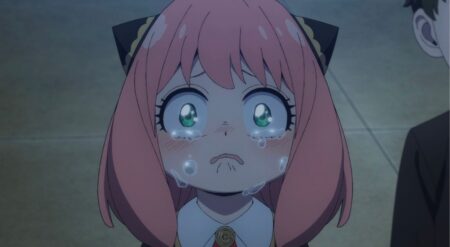
Blue Lynx is an anime label dedicated to releasing BL genre anime, and they’ve delivered two of the most talked-about queer romances with Given and Twittering Birds Never Fly adaptations. Having just begun in 2017, the company has quickly become one of my favorites, and now with Stranger by the Shore (L’étranger de la Plage), they’re continuing to tell stunning BL stories. Directed and adapted from the manga of the same name by Akiyo Ohashi and animated studio Hibari, Stranger by the Shore has released on FUNimation and, with it, brought an ocean of feels for you to jump into.
BL, a genre of romance stories that portray the love between two male leads, has been a transformative form of storytelling for many readers. Although some people reduce the genre to its more mature elements, it has a lot to offer readers, especially those learning how to navigate their identities. Stranger by the Shore does that work. In the film, we see the budding romance between Shun Hashimoto and Mio Chibana.
Shun Hashimoto is a gay novelist living in Okinawa, estranged from his parents after coming out. Mio Chibana is a recently orphaned high school student living with his relatives after his mother’s death. Although their beginning conversations are awkward, each responding to the other while carrying their own trauma, they click, growing closer over time despite the age gap. But, after confessing that he likes Mio, it’s clear that they can’t progress, solidified as Mio shares that he is moving to the city. Three years later, though, Mio suddenly moves back and confesses he is in love with Shun. Instead of being the warm welcoming of two people who can finally be together, Shun is instead overcome with guilt thinking that he deprived Mio of a “normal” life by confessing to him.
What follows is the crux of Stranger by the Shore. Shun grows to accept himself and to trust that Mio’s words and intention are honest and born out of love, not out of curiosity or confusion. The film may only be one hour, but it’s a stunning one. Mio’s determination and love are seen throughout the film, but beyond that, we also get to see how he became so sure through flashbacks. We see his grief over losing his mother, how he discovers himself after Shun’s declaration, and ultimately who he is as a person, even outside of love. On Shun’s part, flashbacks offer context to his apprehension by showing moments of the homophobic bullying he dealt with as a teen and his coming out that led him to fear his own identity.
Shun loves Mio as much as Mio loves him. But, his trauma has locked him into thinking that by beginning a life with Mio, he is holding Mio back from a “normal” life. Instead of seeing Mio as the man, he can build his life with, Shun sees himself as taking away a heteronormative future that will keep Mio safe. In doing this, Shun ignores Mio’s emotions and needs all over an assumption he’s made and that Mio has never voiced. That said when the two finally come together, and Shun realizes that there is nothing wrong with Mio loving him, their tenderness and care are palpable. Mio never lost faith in Shun, even in his frustration of being pushed towards women by the man he loves. Instead, they find each other through their trauma and grief that makes their intimacy rewarding both from a narrative and visual standpoint.
Stranger by the Shore is a stunningly beautiful and equally powerful story that confronts how we can internalize the hate and stigma around us. And also, how we can find ourselves once we decide to let others in. Yes, this is a story told through anime, but it’s also a story first told in manga, and that’s important. Stranger by the Shore is the best adaptation of a manga I’ve ever seen. From the pacing to the art style and the use of notable dialogue, everything lands in this adaptation. The anime captures the beauty, intimacy, and melancholy of the story. While this is thanks to Ohashi’s screenplay and direction, it’s also thanks to the vibrant animation.
Studio Habari does a phenomenal job of animating scenes from the manga, capturing the beauty of the mangaka Kii Kanna’s artwork in the original work. From small details like hair and bracelets to larger ones like Mio’s hat, everything is on point and gorgeously rendered. But what really takes this film up to another level is Studio Habari’s backgrounds and landscapes. From the mountains in the back in the image at the top of this review to the ocean and the flowers, every bit is rendered with elements of realness that make the film magical.
All in all, Stranger by the Shore is perfection. It’s a love story that is about the characters as individuals as it is about them as a pair. It also deals with age gaps in one of the healthiest ways I’ve ever seen in anime. Additionally, it can not be overstated how powerful it is to have a story of love and belonging available directly on FUNimation’s platform, making it accessible to anime fans in the United States in an easy way. If you’re looking for a queer romance that focuses on growth and companionship, or you’re just looking for a love story about becoming assured in yourself and finding a home in someone else, Stranger by the Shore is for you.
Stranger by the Shore is available now in the United States exclusively on FUNimation.
Stranger by the Shore
-
Rating - 10/1010/10
TL;DR
Stranger by the Shore is perfection. It’s a love story that is about the characters as individuals as it is about them as a pair…If you’re looking for a queer romance that focuses on growth and companionship, or you’re just looking for a love story about becoming assured in yourself and finding a home in someone else, Stranger by the Shore is for you.







